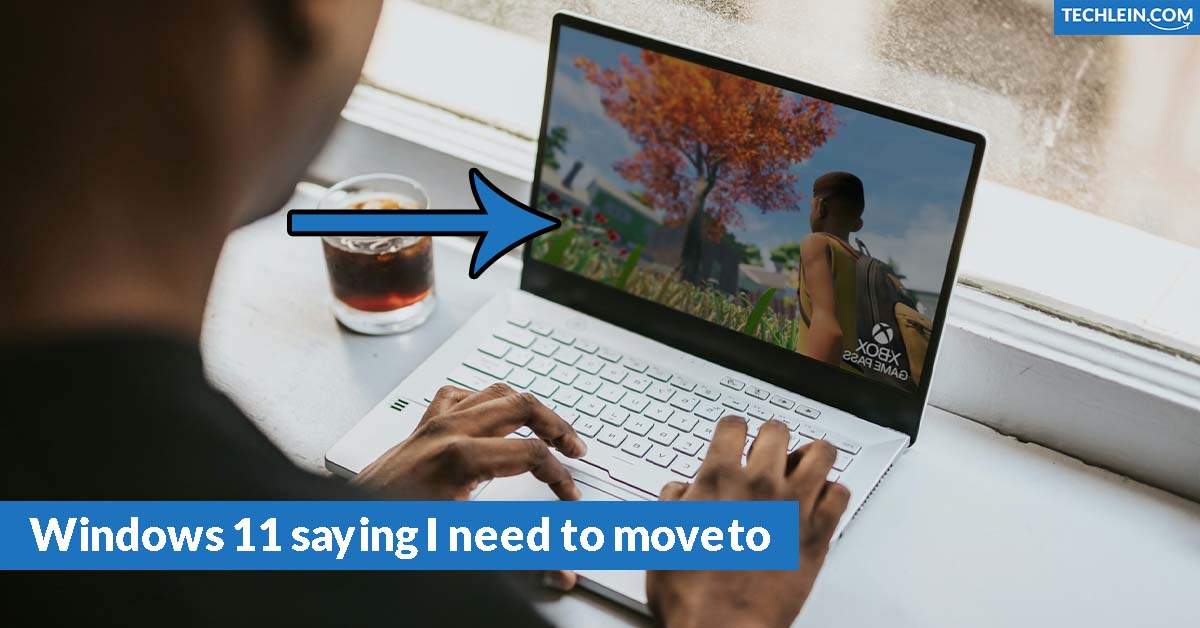I’ve been waiting for Windows 11 for a long time. Windows 11 saying I need to moveto Windows 11 But, should I upgrade or stick with what I know? This question has been on my mind, and I think many of you think the same thing.
In this guide, we’ll look at Windows 11’s new features and enhancements. We’ll also check the system requirements and compatibility. And, we’ll discuss the pros and cons of switching. This article will help you decide if Windows 11 is right for you, whether you’re a tech enthusiast or just want the latest tech.
RELATED ARTICLE: Windows 11 taking too much space
If you’re unsure about moving to Microsoft’s latest OS or staying with Windows 10, keep reading. Let’s explore together and find out if Windows 11 is the best choice for you.
Introducing Windows 11: A Fresh Look at Microsoft’s Latest OS
Windows 11 is a big change from Windows 10. It has a sleek design that makes using your computer easier. The new Start menu and multitasking features make it more intuitive and pretty.
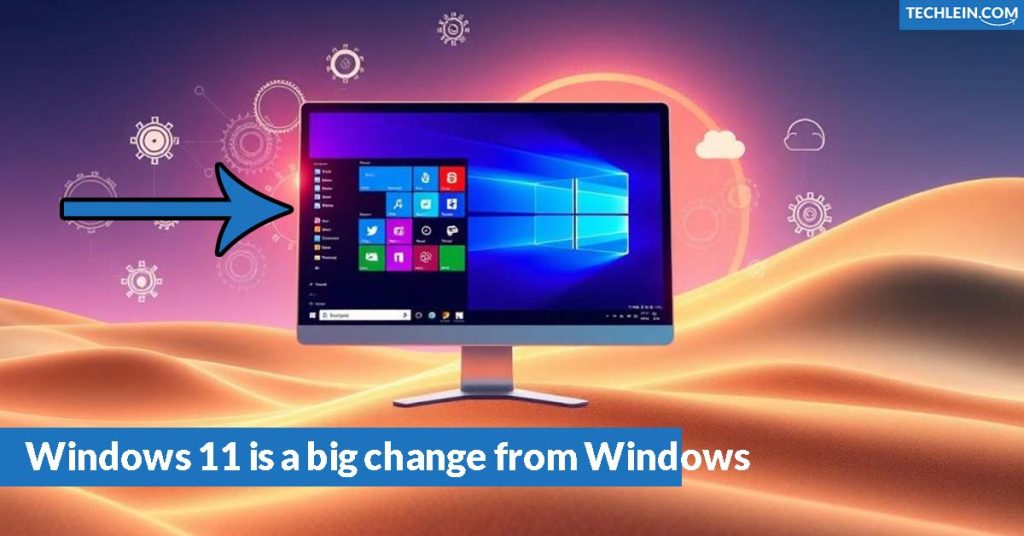
The look of Windows 11 is different. It has a clean design with rounded corners and a centered taskbar. This new look makes it easier to use and more pleasing to the eye.
Windows 11 also has new features for today’s computer users. The Start menu now shows personalized suggestions and recent files. This makes it simpler to find what you need fast.
It also has better multitasking. You can have multiple windows open at once and switch tasks easily. This makes working on your computer more efficient and fun for Windows 11 users.
As Microsoft’s latest OS, Windows 11 brings a new view to the desktop. It focuses on design, making things easier, and features that put the user first. It aims to attract both old and new users with its modern and streamlined look.
Key New Features and Enhancements in Windows 11
Windows 11 brings a sleek, modern look to your screen. It has a new Start menu, taskbar, and design. These changes make it easier to use and work with, improving your Windows 11 user interface.
Sleek User Interface and Design Overhaul
Windows 11 has a stunning new look. It features a simplified taskbar and a centered Start menu. The design is clean and modern, making it easier to use the new Windows features.
Improved Multitasking and Productivity Tools
Windows 11 also boosts your multitasking and productivity. It has better virtual desktops, snap layouts, and window management. These Windows 11 productivity tools help you stay organized and focused, making you more efficient.
| Feature | Description |
|---|---|
| Snap Layouts | Easily arrange multiple windows on the screen with pre-defined layouts, enabling more efficient multitasking. |
| Virtual Desktops | Create and switch between multiple virtual desktops, allowing users to organize their work and personal activities separately. |
| Improved Window Management | Enhanced window resizing, docking, and snapping capabilities make it easier to manage and organize open applications. |
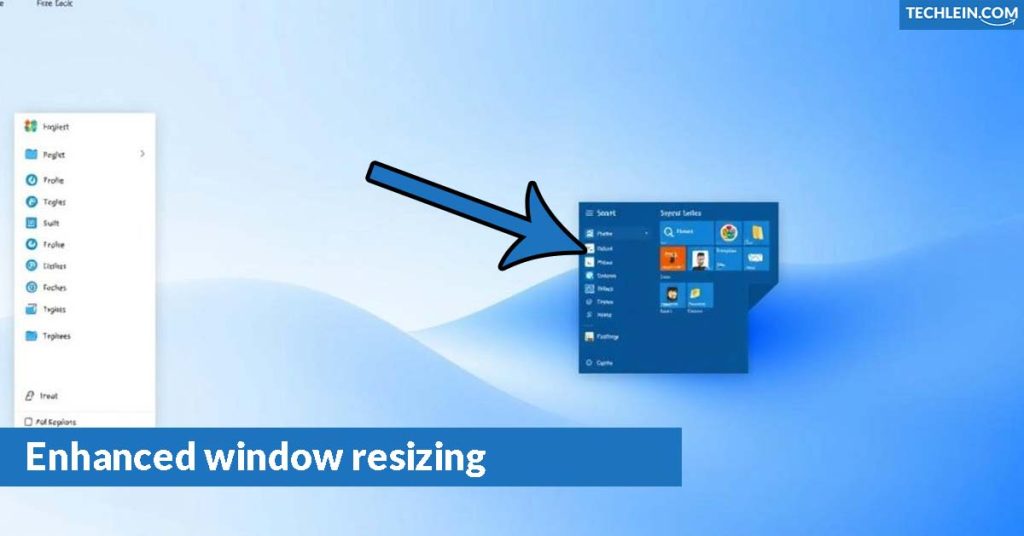
“Windows 11 delivers a visually striking and productivity-focused experience, empowering users to work smarter and more efficiently.”
Windows 11 System Requirements and Compatibility Check
Before you upgrade to Windows 11, check if your hardware meets the system’s needs. Microsoft has clear guidelines for the minimum specs required for a smooth run.
To see if your device is ready for Windows 11, use the PC Health Check app from Microsoft. This tool checks your system and tells you if it’s compatible.
The main Windows 11 requirements are:
- Processor: 1 GHz or faster with 2 or more cores on a compatible 64-bit processor or System on a Chip (SoC)
- RAM: 4 GB or more
- Storage: 64 GB or more available storage
- UEFI Secure Boot: Enabled
- TPM (Trusted Platform Module): Version 2.0
Your device also needs a compatible display with a 720p or higher resolution. Plus, an internet connection and a Microsoft account for some features.
If your device doesn’t meet the Windows 11 compatibility needs, you might need to upgrade your hardware. Or, you could look into other options. Always check the system requirements and verify your device’s compatibility before installing the new OS.
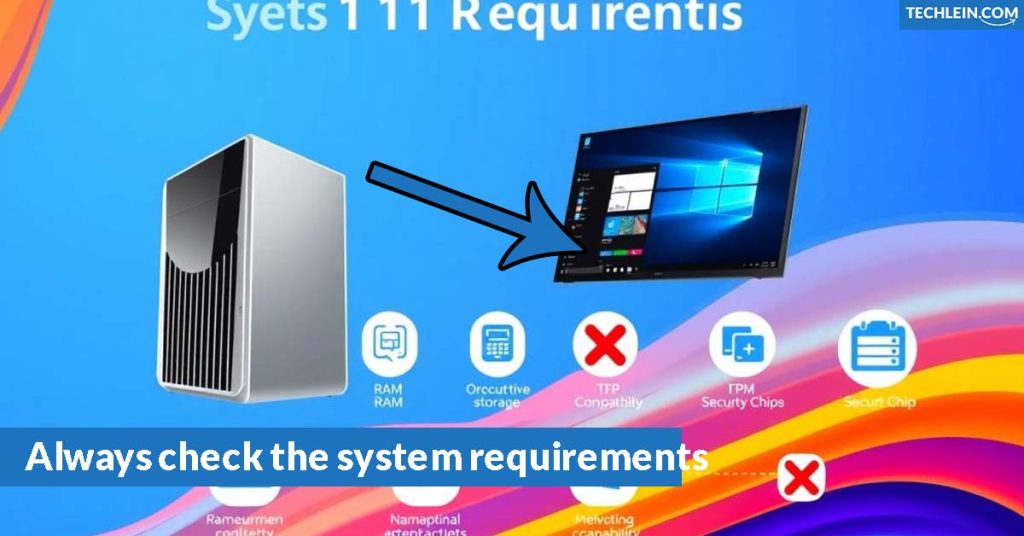
“Ensuring your hardware meets the Windows 11 requirements is crucial for a smooth and seamless upgrade experience.”
Windows 11 saying I need to move to Windows 11
If your Windows 11 computer tells you to upgrade, there’s a reason. This message shows up when your device can’t run Windows 11 well. It means your hardware might not work with the newest Microsoft operating system.
Several things can cause this message. For example:
- Your computer’s processor (CPU) is not on the list of supported processors for Windows 11.
- Your device doesn’t have the required amount of RAM or storage space.
- Your system’s security features, such as Secure Boot and TPM 2.0, are not enabled or configured correctly.
Microsoft set these requirements to make sure Windows 11 works well and safely on your device. Trying to ignore these requirements can cause problems. It might make your computer run slow, be less secure, and have compatibility issues later on.
| Minimum System Requirements for Windows 11 | Recommended System Requirements for Windows 11 |
|---|---|
| Processor: 1 GHz or faster with 2 or more cores on a compatible 64-bit processor or System on a Chip (SoC) RAM: 4 GB Storage: 64 GB or larger storage device Security: UEFI, Secure Boot, and TPM 2.0 Graphics card: Compatible with DirectX 12 or later, with WDDM 2.0 driver | Processor: 8th Generation Intel Core processor or AMD Ryzen 2000 or later RAM: 8 GB or more Storage: 128 GB or larger SSD Security: UEFI, Secure Boot, and TPM 2.0 Graphics card: Compatible with DirectX 12 or later, with WDDM 2.0 driver |
If your computer doesn’t meet the minimum requirements, you might need to upgrade your hardware. Or, you could stick with Windows 10 until you’re ready to switch to Windows 11. The bright side is that Windows 10 will keep getting security updates and support until October 2025. This gives you plenty of time to plan your move to Windows 11.
Performance and Security Improvements in Windows 11
Microsoft has made big changes with Windows 11. These changes make the operating system run better and keep it safer. Now, users get a faster and more secure way to work and play.
Enhanced Security Features and Updates
Windows 11 has stronger security features. It includes Secure Boot, Windows Defender, and Windows Hello. These features help protect your device from online threats.
Also, Windows 11 makes updating easier. Your system will always have the latest security updates. This keeps your device safe from new cyber attacks.
| Windows 11 Security Features | Description |
|---|---|
| Secure Boot | Prevents the loading of malicious software during the boot process, ensuring a secure system start-up. |
| Windows Defender | Provides real-time protection against viruses, malware, and other security threats, with automatic updates to stay ahead of the latest threats. |
| Windows Hello | Enables biometric authentication, such as face recognition or fingerprint scanning, for secure access to your device and applications. |
These Windows 11 security enhancements make your computer safer and more reliable. They give you peace of mind and protect you from cyber threats.
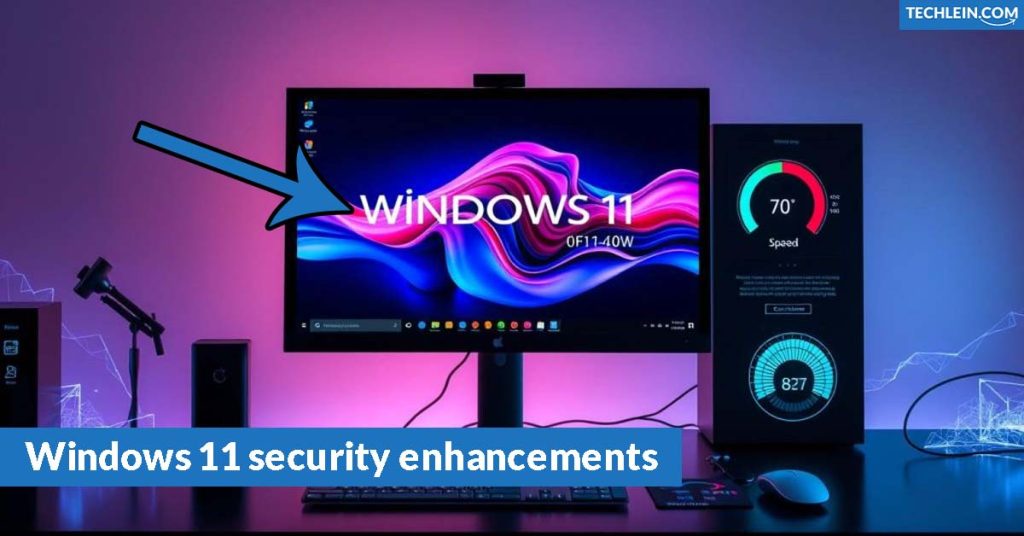
“Windows 11 represents a significant leap forward in terms of security and performance, providing users with a more secure and efficient computing experience.”
The Windows 11 performance upgrades also make your computer faster. You’ll see quicker start-ups and better handling of tasks. This means your computer will work smoothly, even when you’re doing lots of things at once.
Reasons to Upgrade vs. Reasons to Stay on Windows 10
Choosing between Windows 11 and Windows 10 is a big decision. Windows 11 brings a new look, better productivity tools, and stronger security. Yet, some might not want to leave the comfort of Windows 10.
Let’s look at why you might want to switch to Windows 11 or stick with Windows 10.
Reasons to Upgrade to Windows 11
- A sleek new interface with a modern Start menu and taskbar
- Enhanced multitasking with Snap Layouts and Snap Groups
- Stronger security with Secure Boot and virtualization-based security
- Support for the latest hardware and technologies
- Seamless integration with Microsoft 365 and cloud services
Reasons to Stay on Windows 10
- Familiarity and Comfort: Some like the familiar look and feel of Windows 10.
- Hardware Compatibility: Older devices might not meet Windows 11’s system requirements.
- Software Compatibility: If your apps aren’t ready for Windows 11, it’s best to wait.
- Stability and Reliability: Windows 10 is stable and reliable, and some prefer it.
Whether to go with Windows 11 or stay with Windows 10 depends on your needs and device. Think about what’s best for you before making a choice.
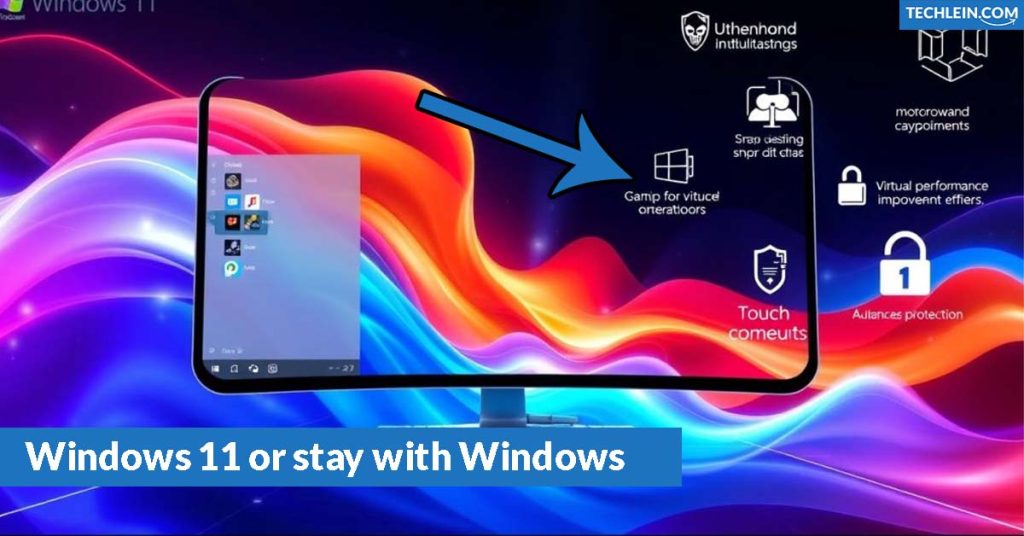
Smooth Migration and Data Transfer to Windows 11
Upgrading to a new operating system is exciting but can worry you about moving your data and settings. Migrating to Windows 11 can be easy and stress-free if you know the right steps.
Backup and Transfer Your Data Seamlessly
Before starting your Windows 11 migration, make a full backup of your data. This includes your key files, documents, photos, and more. You can back up your data using an external hard drive, cloud storage, or Microsoft’s tools.
After backing up your data, you can move your apps, settings, and user profiles to your new Windows 11 data transfer. Many of your programs and settings can be moved easily. This makes your transition to the new operating system smooth.
- Use Microsoft’s built-in tools to transfer your files, settings, and applications
- Leverage cloud storage services to sync your data across devices
- Explore third-party migration software for a more comprehensive transfer experience
By following these steps, you can confidently upgrade to Windows 11. Your important data and personalized settings will make the transition with you.
“The key to a successful windows 11 migration is to plan ahead and take the necessary steps to protect your data.”
Timeline and Availability of Windows 11 Upgrade
Microsoft is slowly releasing Windows 11 in phases. Many users wonder when they can get the Windows 11 upgrade for their devices. The company has shared a clear timeline for this rollout.
The Windows 11 upgrade will start with newer, supported devices in October 2021. Over time, more devices will get the upgrade. This ensures a smooth and controlled process.
To see if your device can get the Windows 11 upgrade, use the PC Health Check app. Or, visit the Microsoft website for a compatibility check. This will tell you if your computer meets the upgrade requirements.
| Windows 11 Upgrade Timeline | Availability |
|---|---|
| October 2021 | Initial rollout to newer, supported hardware |
| 2022 | Gradual expansion to a wider range of compatible devices |
| 2023 and beyond | Continued availability and support for the Windows 11 upgrade |
The Windows 11 availability timeline might change based on your location and device. Keep informed and check your system’s compatibility. This ensures a smooth transition to the new operating system.
The Windows 11 upgrade is a big change. It’s crucial to think about your system’s needs and your personal preferences before upgrading. Stay updated with Microsoft’s news as they roll out this exciting new version.
Addressing Common Concerns and Myths About Windows 11
With any big software update, worries and wrong ideas pop up. It’s key to tell fact from fiction and tackle these issues directly. Microsoft has been clear about what’s new and better in Windows 11. Users need to know the truth to make smart choices.
Many worry about Windows 11’s system needs. Microsoft has set certain hardware standards, but they also offer tools to check if your device fits. These rules are to make sure Windows 11 runs well and safely, not to push you to buy new stuff.
Some think Windows 11 is a big jump from Windows 10. But, the move is meant to be easy, keeping the good stuff the same. The new looks and tools aim to make things better, not to change everything. You’ll see a natural growth, not a big leap.
FAQ
What are the key new features and enhancements in Windows 11?
Windows 11 has a new look with a modern Start menu and taskbar. It also has better multitasking tools like snap layouts and improved virtual desktops. These changes help you work more efficiently.
What are the system requirements and compatibility for Windows 11?
To upgrade to Windows 11, your device must meet certain requirements. It needs a compatible processor, at least 4GB of RAM, and 64GB of storage. Use the Windows 11 compatibility tool to check if your device is ready.
Why am I seeing a message from Windows 11 saying I need to move to the new operating system?
If Windows 11 tells you to upgrade, it’s because your device is compatible. Microsoft has checked your device and says it’s ready for the new OS. This is part of their rollout plan.
What are the performance and security improvements in Windows 11?
Windows 11 is faster and more secure than before. It boots up quicker and manages resources better. It also has new security features to protect your device.
Should I upgrade to Windows 11 or stay on Windows 10?
Whether to upgrade to Windows 11 or stay on Windows 10 depends on your needs. Consider the new features, compatibility, and how it affects your work. We’ve outlined the pros and cons to help you decide.
How can I migrate my data and applications from Windows 10 to Windows 11?
Upgrading to Windows 11 is easy. You can move your files, settings, and apps from Windows 10. We’ll guide you on how to back up your data and make the transition smooth.
When will the Windows 11 upgrade be available for my device?
Microsoft is releasing Windows 11 in phases. The upgrade will be available for compatible devices over time. The exact timeline depends on your device’s hardware and location.
What are some common concerns and myths about Windows 11?
There are many myths and concerns about Windows 11. Some worry about compatibility, performance, and privacy. We’ll address these concerns with facts to help you decide about upgrading.

